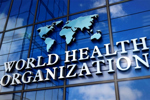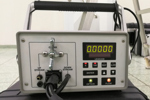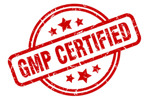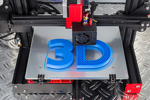ARTICLES BY TIM SANDLE
-
Phages As A Pharmaceutical: New EMA Guidance On Antimicrobial Drug Development11/17/2025
The EMA has now issued a draft guidance on quality aspects of phage therapy medicinal products. Rising antimicrobial resistance has renewed interest in bacteriophages to fight pathogens.
-
EMA Issues Draft Reflection Paper On Accelerating Biosimilar Approval5/5/2025
In April, the European Medicines Agency issued a draft of a new guidance document titled Reflection paper on a tailored clinical approach in biosimilar development. The public consultation runs until Sept. 30, 2025.
-
5 Characteristics Of Forward-Thinking Microbiology Labs In 202512/6/2024
Improving microbiology laboratory efficiency is a continuum. Here are five tech-forward trends that will impact cost and efficiency in 2025.
-
Improving Viral Safety: Highlights Of ICH Q5A(R2), USP, Ph. Eur. Recommendations8/6/2024
ICH Q5A (R2) was released in Nov. 2023 and adopted by the FDA and EMA earlier this year. For a fuller assessment of viral control, compendia from the USP and European Pharmacopeia help.
-
EMA Updates Guidance On Inhalation And Nasal Product Quality5/29/2024
The EMA has issued a new draft guideline, “Guideline On The Pharmaceutical Quality Of Inhalation And Nasal Medicinal Products.” The public comment period ends Oct. 31.
-
Nitrosamines: New WHO Guidance Provides Expanded Risk Assessment Considerations5/6/2024
Nitrosamines are potential contaminants of drug products. Contamination can occur from synthesizing APIs and excipients, from leaching into the product from primary packaging, and more.
-
New ISO 14644-21:2023 Addresses Reducing Sampling Errors With Airborne Particle Counters9/11/2023
The new ISO 14644 Part 21 addresses optimizing particle counter accuracy in cleanrooms, focusing on reducing sampling error and particle loss. Discussion includes the use of airborne particle counters, tubing, and isokinetic probes.
-
CGMP Requirements For Automated Facility Monitoring Systems8/15/2023
To assess facility control, most organizations use facility monitoring systems to monitor the manufacturing workspaces continuously. Let's take a deeper look at current good manufacturing practice (CGMP) requirements for the design and operation of such automated systems, including a look at total particle counting.
-
Key Considerations In Selecting A Robotic Solution For Endotoxin Testing7/6/2023
The U.S., European, and Japanese Pharmacopoeias require testing for bacterial endotoxin in pharmaceutical products, water, intermediates, and medical devices. This article shares key criteria for those of us who are looking to select an automated/robotic endotoxin detection system.
-
Not All Plate Counting Technologies Are The Same5/18/2023
While rapid microbiological methods have advanced, most microbiology lab tests remain reliant upon assessing microbial growth on agar plates. Discrepancies with plate counting, together with the limitations of human vision, have led to regulatory concerns. This article shares the advantages of automated colony counters. Keep in mind that not all automated plate counters are the same, though — you'll want to look for important functionality.
-
5 Characteristics Of The Automated Microbiology Lab Of The Future4/24/2023
The modern microbiology laboratory is starting to look very different from the laboratory of 10 years ago, and it will continue to evolve in the next few years. There are a number of innovations being implemented now or are in progress that can signal the path that many microbiology laboratories will follow.
-
FDA Adopts ICH Final Guidance On Bioanalytical Method Validation1/11/2023
The FDA has issued final guidance on the validation of biological assays, titled M10 Bioanalytical Method Validation and Study Sample Analysis. ICH approved the final guidance in May 2022, so this FDA adoption completes international acceptance of a unified approach. It extends to both full and partial validation for clinical and nonclinical studies.
-
ICH Issues Draft Guideline On Viral Safety Evaluation Of Biotech Products12/8/2022
Viral contamination can affect raw materials, cell culture processes, bioreactor contamination, and downstream processing. ICH's new draft guideline titled Viral Safety Evaluation of Biotechnology Products Derived From Cell Lines of Human or Animal Origin is available for public comment through the FDA (ending Jan. 14, 2023) and through the EMA (ending Feb. 10, 2023).
-
FDA Releases Guidance On Drug Products Containing Nanomaterials11/18/2022
In the FDA guidance entitled Drug Products, Including Biological Products, that Contain Nanomaterials, “nanomedicine” refers to a drug product that contains at least one component with a dimension in the size range of approximately 1 nanometer (nm) up to 100 nm. Focus of the guidance is on a risk-based regulatory strategy.
-
3D Printing For Pharmaceuticals & Medical Devices: A Primer With Risk Considerations1/28/2022
Implementation of single-use technologies for pharma and medical device manufacturing has introduced advantages in terms of design, sterility assurance, and a reduction in energy usage. 3D printing can deliver precise measurements to production facilities. This article describes the 3D printing process, risk considerations, and limitations — but the future is bright.
















